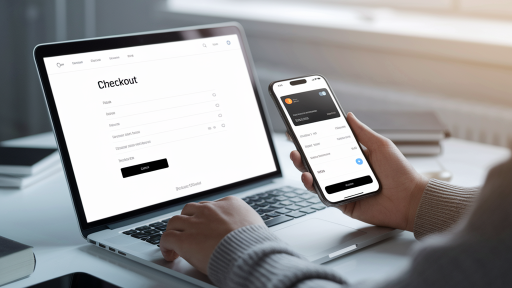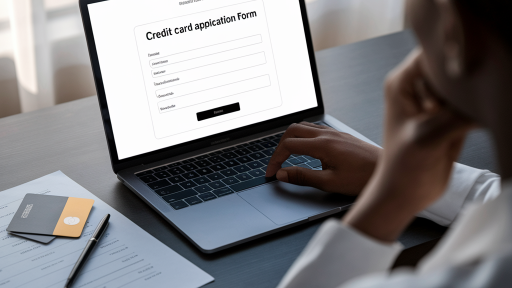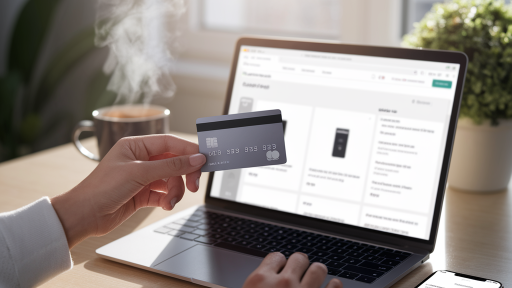In our increasingly digital world, the way we handle money has transformed dramatically. Gone are the days of needing to visit a bank branch for every financial need. Today, from applying for loans to managing investments, nearly everything can be done from the comfort of your home, and credit cards are no exception. This shift has made financial tools more accessible than ever before.
Understanding how to navigate the world of online credit cards is crucial. It’s not just about the convenience of applying online; it’s about leveraging digital tools for better security, management, and financial planning. This guide will walk you through everything from the application process to advanced security features, empowering you to make informed and confident decisions.
What Exactly Are Online Credit Cards?
The term “online credit card” can mean a couple of different things, but it primarily refers to the method of application and management rather than a distinct type of product. Essentially, it is a standard credit card that you apply for, get approved for, and manage entirely through a digital interface, such as a website or a mobile app. This process eliminates the need for paper applications and in-person visits.
Within this category, there are two main variations:
- Physical Cards Applied for Online: This is the most common type. You complete an application on a bank’s website, and upon approval, a physical plastic card is mailed to you. You then manage your account—viewing statements, making payments, and tracking rewards—through an online portal or app.
- Virtual Credit Cards (VCCs): Also known as digital cards, these are designed specifically for online use. A VCC is a unique, randomly generated card number with its own expiration date and CVV, linked to your primary credit account. You can often use them instantly after approval without waiting for a physical card to arrive.
The Rise of Digital-First Banking and Virtual Cards
The move towards digital-first finance has paved the way for innovative products like virtual credit cards. These are not just a novelty; they represent a significant step forward in payment security. When you use a virtual card for an online purchase, you are not exposing your actual credit card number. Many providers allow you to create single-use cards for one-time transactions or set spending limits on a specific virtual card, giving you unparalleled control over your spending and security.
This is particularly useful when shopping on a new or unfamiliar website. If that merchant’s data is ever breached, your primary account remains secure because the compromised virtual card number cannot be used for other purchases. This modern approach is rapidly becoming a standard feature offered by major banks and fintech companies.
Key Benefits of Managing Your Credit Card Online
Embracing the digital management of your credit offers a host of advantages that streamline your financial life and enhance security. The benefits go far beyond simply avoiding a trip to the bank.
- Unmatched Convenience: Access your account 24/7 from anywhere with an internet connection. Pay your bill, check your balance, or dispute a charge on your own schedule.
- Instant Application and Approval: Many issuers offer online applications that take just minutes to complete. In some cases, you can receive a decision almost instantly and, with virtual cards, start shopping right away.
- Enhanced Security Features: Digital platforms provide powerful security tools. You can set up real-time transaction alerts, freeze or unfreeze your card with a single click, and generate virtual card numbers for safer online shopping.
- Effortless Tracking and Budgeting: Online portals often categorize your spending automatically, providing valuable insights into your financial habits. Digital statements are easily accessible and better for the environment.
- Streamlined Online Shopping: With features like browser auto-fill and integration with digital wallets, making online purchases is faster and more seamless than ever.
Applying for a Credit Card Online: A Step-by-Step Guide
The online application process is designed to be straightforward, but it’s important to be prepared. Following these steps can help ensure a smooth and successful experience.
- Research and Compare Offers: Don’t jump at the first offer you see. Compare cards based on their annual fees, Annual Percentage Rate (APR), rewards programs (cash back, points, or miles), and sign-up bonuses. Websites that aggregate and compare offers can be a great resource.
- Check Your Credit Score: Your credit score is a major factor in determining your eligibility and the interest rate you’ll be offered. Knowing your score beforehand helps you apply for cards you’re likely to be approved for, avoiding unnecessary hard inquiries on your credit report. You can often get a free report from services like Experian or other major credit bureaus.
- Gather Necessary Information: To complete the application, you’ll typically need your Social Security Number (or ITIN), date of birth, physical address, and details about your annual income and employment.
- Fill Out the Online Application Carefully: Navigate to the card issuer’s secure website and fill out the form. Double-check all information for accuracy before submitting, as typos can cause delays or rejection.
- Await the Decision: After submission, you’ll receive a decision. This can be instant approval, a denial, or a “pending” status, which means the issuer needs more time to review your information.
Comparing Physical vs. Virtual Credit Cards
While both are linked to your line of credit, their practical uses and security features differ. Understanding these differences can help you decide which is better for a given situation.
| Feature | Physical Credit Card | Virtual Credit Card |
|---|---|---|
| Primary Use | In-person and online purchases | Primarily for online and over-the-phone purchases |
| Issuance Speed | Requires days or weeks for mail delivery | Generated instantly online or in-app |
| Security Level | Vulnerable to physical theft and skimming | High; protects primary account from data breaches |
| Spending Controls | Limited to overall credit limit | Can be locked to a single merchant or have set spending limits |
| Lifecycle | Valid for several years | Can be temporary (single-use) or recurring |
Essential Security Practices for Using Credit Cards Online
Convenience should never come at the cost of security. Protecting your financial information online requires vigilance and good habits. Follow these best practices to keep your accounts safe.
Use Secure and Private Networks
Never enter your credit card information when connected to public Wi-Fi, such as in a coffee shop or airport. These networks are often unsecured, making it easy for cybercriminals to intercept your data. Always perform financial transactions on a trusted, password-protected network, like your home Wi-Fi.
Verify Website Legitimacy (HTTPS)
Before entering any personal information, check the website’s address bar. Ensure it begins with “https://” and has a padlock icon next to it. The “s” stands for “secure,” indicating that the data transmitted between your browser and the website is encrypted and protected from eavesdroppers.
Enable Two-Factor Authentication (2FA)
Two-factor authentication adds a critical second layer of security to your online banking portal. Even if a thief steals your password, they won’t be able to access your account without the second verification step, which is typically a code sent to your phone or generated by an authenticator app.
Be Wary of Phishing Scams
Phishing is a common tactic where criminals send emails or text messages pretending to be from your bank to trick you into revealing your login credentials or card details. Your bank will never ask for your password or full card number via email. Be skeptical of unsolicited messages and never click on suspicious links. Learning how to spot these phishing attempts is a key digital skill.
Regularly Monitor Your Statements
Get into the habit of reviewing your credit card statements at least once a week. Online portals make this easy. By checking frequently, you can spot and report any fraudulent charges immediately, minimizing potential damage and speeding up the resolution process.
The Future is Digital: Trends in Online Credit
The world of online finance is constantly evolving. The integration of credit cards with digital wallets like Google Pay and Apple Pay has made contactless payments the norm. We’re also seeing a rise in biometric authentication, where your fingerprint or face becomes your password, making transactions both faster and more secure. Furthermore, the lines between traditional credit and newer models like Buy Now, Pay Later (BNPL) are blurring, with major credit card networks beginning to incorporate installment payment features directly into their platforms.
Ultimately, online credit cards are more than just a convenience; they are a powerful financial tool that offers enhanced control, security, and insight into your spending. By understanding how they work and adopting safe practices, you can confidently take advantage of all the benefits they have to offer. As technology continues to advance, these digital tools will only become more integrated into our daily financial lives.
To further protect yourself and understand your rights, it’s beneficial to review official resources on financial safety. The Federal Trade Commission offers a comprehensive guide on the best practices for using online credit cards securely, providing valuable information for all consumers.




